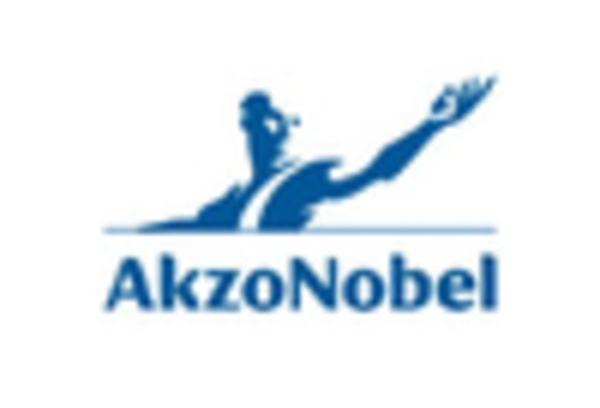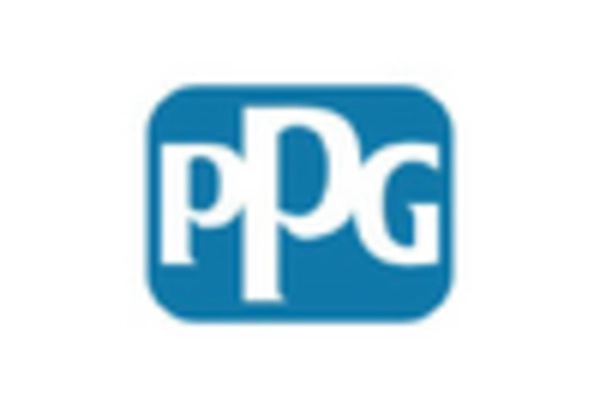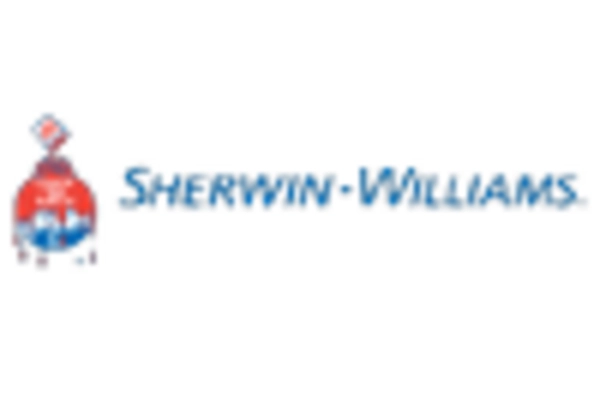Rising DIY Culture
The Painting Tools Market is experiencing a notable surge in demand due to the rising do-it-yourself (DIY) culture. As individuals increasingly engage in home improvement projects, the need for quality painting tools has escalated. This trend is particularly evident in regions where homeowners are investing in renovations to enhance property value. According to recent data, the DIY segment accounts for a substantial portion of the market, with a projected growth rate of approximately 6% annually. This shift towards self-sufficiency in home maintenance is likely to drive innovation in painting tools, as manufacturers respond to consumer preferences for user-friendly and efficient products. The Painting Tools Market is thus poised to benefit from this cultural shift, as more consumers seek to undertake painting projects independently.
Sustainability Trends
Sustainability trends are increasingly influencing the Painting Tools Market, as consumers and businesses alike seek environmentally friendly options. The demand for sustainable painting tools, such as those made from recycled materials or designed to minimize waste, is on the rise. This shift is driven by a growing awareness of environmental issues and a desire to reduce carbon footprints. Recent surveys indicate that a significant percentage of consumers prioritize sustainability when making purchasing decisions, which is prompting manufacturers to innovate and adapt their product lines accordingly. The Painting Tools Market is thus likely to see a proliferation of eco-friendly tools that align with these sustainability trends, catering to a market that values both performance and environmental responsibility.
Technological Advancements
Technological advancements are playing a pivotal role in shaping the Painting Tools Market. Innovations in materials and design are leading to the development of more efficient and effective painting tools. For instance, the introduction of smart painting tools equipped with sensors and connectivity features is enhancing user experience and precision. These advancements not only improve the quality of work but also reduce time and labor costs, making them attractive to both professionals and DIY enthusiasts. The market is witnessing a shift towards tools that incorporate ergonomic designs and sustainable materials, aligning with consumer preferences for eco-friendly options. As technology continues to evolve, the Painting Tools Market is likely to see an influx of new products that cater to the changing needs of users.
Increased Focus on Aesthetics
The Painting Tools Market is also driven by an increased focus on aesthetics in both residential and commercial spaces. As consumers become more discerning about interior and exterior designs, the demand for high-quality painting tools that can deliver superior finishes is on the rise. This trend is particularly pronounced in urban areas where competition among property owners to create visually appealing environments is fierce. Market data suggests that the demand for premium painting tools is growing, with consumers willing to invest in products that promise durability and exceptional results. This heightened emphasis on aesthetics is likely to propel the Painting Tools Market forward, as manufacturers strive to meet the expectations of a more style-conscious consumer base.
Growth in Construction Activities
The Painting Tools Market is significantly influenced by the growth in construction activities across various sectors. As urbanization continues to expand, the demand for residential and commercial buildings is on the rise. This increase in construction projects necessitates the use of high-quality painting tools, as contractors and builders seek to deliver aesthetically pleasing finishes. Recent statistics indicate that the construction sector is projected to grow at a compound annual growth rate of 5% over the next few years. Consequently, this growth is expected to bolster the Painting Tools Market, as professionals require reliable tools to meet the demands of new builds and renovations. The interplay between construction growth and painting tool demand suggests a robust market outlook.

















Leave a Comment